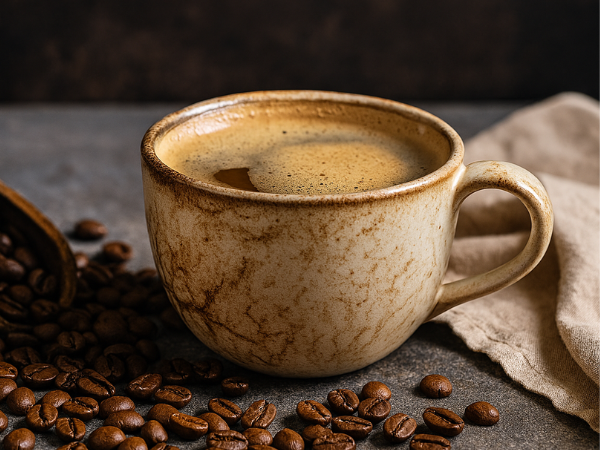Cutting back on caffeine doesn’t mean giving up the rich aroma and satisfying taste of coffee. With naturally low‑caffeine beans and carefully crafted blends, you can still enjoy your daily cup without the side effects of overstimulation.
From smooth, nutty profiles to bright, balanced flavors, today’s low‑caffeine coffees offer variety and depth that rival traditional roasts.
Why Choose Low‑Caffeine Coffee?
Low‑caffeine coffee is an excellent choice for people who love the ritual of coffee but want to avoid the side effects of too much caffeine. Whether it’s jitters, disrupted sleep, or sensitivity to stimulants, reducing caffeine can make coffee more enjoyable and sustainable.
Key reasons to choose low‑caffeine coffee:
- Better sleep quality – less caffeine means fewer late‑night disruptions.
- Reduced anxiety or jitters – ideal for those sensitive to stimulants.
- More cups per day – enjoy coffee throughout the day without overdoing it.
- Gentler on the body – especially helpful for people with heartburn or caffeine sensitivity.
Choosing low‑caffeine coffee allows you to keep the comfort of your daily brew while making it easier on your body and lifestyle.
Best Naturally Low‑Caffeine Coffee Beans
For coffee lovers who want to cut back on caffeine without sacrificing flavor, naturally low‑caffeine beans are the perfect solution. Unlike decaf, which often uses chemical or water processes to remove caffeine, these beans are either naturally lower in caffeine or blended in a way that reduces the stimulant while keeping the taste intact.
1. Volcanica Low Caffeine Coffee (Natural Process)
This single‑origin coffee is crafted for those who want a gentler caffeine kick while still enjoying a rich, aromatic brew. It’s naturally processed, meaning no chemicals are used to reduce caffeine content.
- Caffeine Content: ~50% less than regular beans.
- Origin: Single‑origin Arabica from Brazil.
- Flavor: Smooth, nutty, with chocolate undertones.
- Why it’s great: Naturally processed to reduce caffeine without chemicals.
The result is a cup that feels indulgent yet balanced, making it a smart choice for anyone who wants to enjoy multiple cups a day without overdoing caffeine.
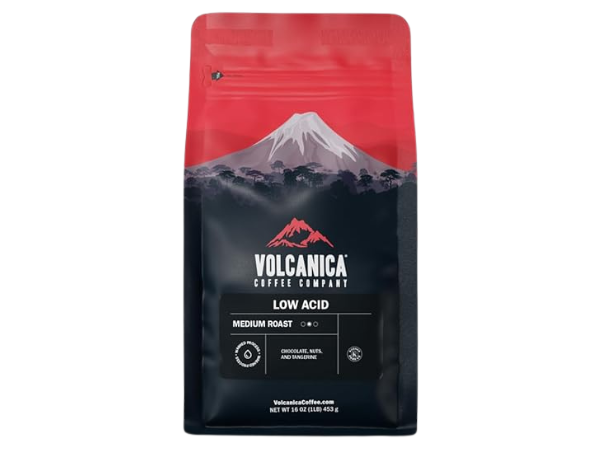
2. Volcanica House Blend Low Caffeine Coffee
This blend is designed for everyday drinkers who want a reliable, versatile option. It combines beans from South America to create a balanced profile that works well across brewing methods.
- Caffeine Content: ~50% less than standard Arabica.
- Origin: Blend of South American beans.
- Flavor: Balanced, medium‑bodied, with caramel and cocoa.
- Why it’s great: A versatile everyday option for reduced jitters.
It’s a dependable choice for those who want a familiar coffee taste with less caffeine, perfect for morning brews or afternoon pick‑me‑ups.
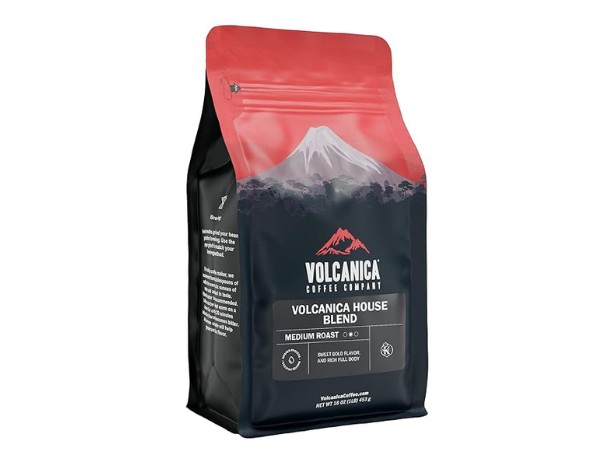
3. HealthWise Low Acid Coffee (Colombian Supremo)
This option is ideal for coffee lovers with sensitive stomachs. Using Colombian Supremo beans, it’s roasted to be both low in acid and naturally lower in caffeine compared to darker roasts.
- Caffeine Content: Naturally lower than many dark roasts.
- Origin: Colombian Arabica beans.
- Flavor: Smooth, mild, with nutty sweetness.
- Why it’s great: Gentle on the stomach, lower in both acid and caffeine.
It’s a thoughtful choice for those who want to enjoy coffee daily without digestive discomfort or caffeine overload.
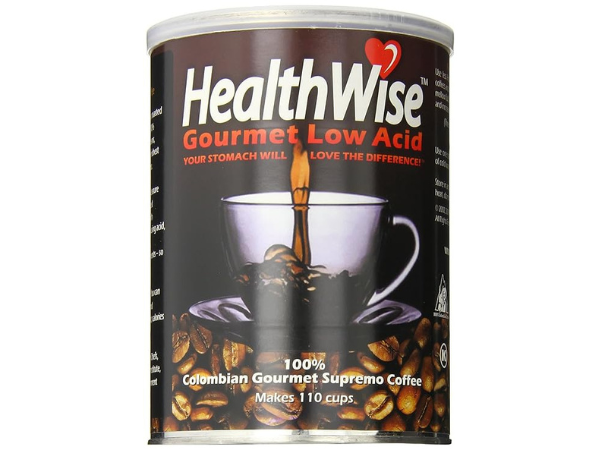
4. Tieman’s Fusion Coffee (Low Caffeine Blend)
This blend takes a creative approach by combining Arabica beans with matcha green tea and rooibos. The result is a functional coffee that’s naturally lower in caffeine while offering added antioxidants.
- Caffeine Content: ~50% less than regular coffee.
- Origin: Arabica beans blended with matcha green tea and rooibos.
- Flavor: Rich coffee base with subtle tea notes.
- Why it’s great: A functional blend that reduces caffeine naturally while adding antioxidants.
It’s a unique option for health‑conscious coffee drinkers who want both flavor and wellness benefits in their cup.
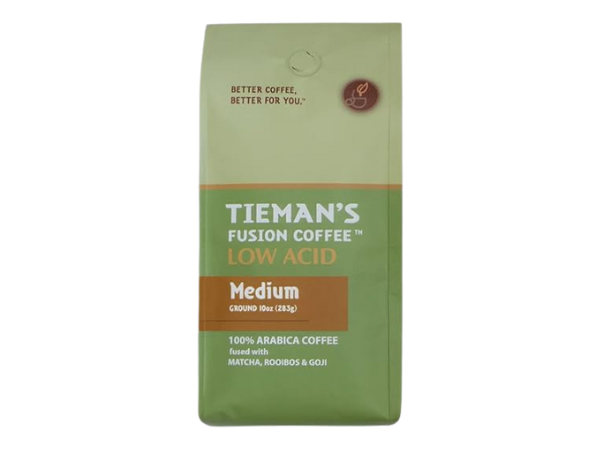
5. Eight O’Clock Coffee 50% Decaf (Half‑Caf)
A household name in coffee, Eight O’Clock offers a half‑caf blend that’s both affordable and widely available. It’s a practical choice for those who want to cut caffeine without switching brands or flavors.
- Form: Ground, Medium Roast
- Caffeine: Half the caffeine of regular coffee
- Flavor: Classic smooth, nutty profile
- Why it’s great: Trusted legacy brand, widely available, and budget‑friendly.
This blend is perfect for everyday drinkers who want a simple, no‑fuss way to enjoy coffee with less caffeine.
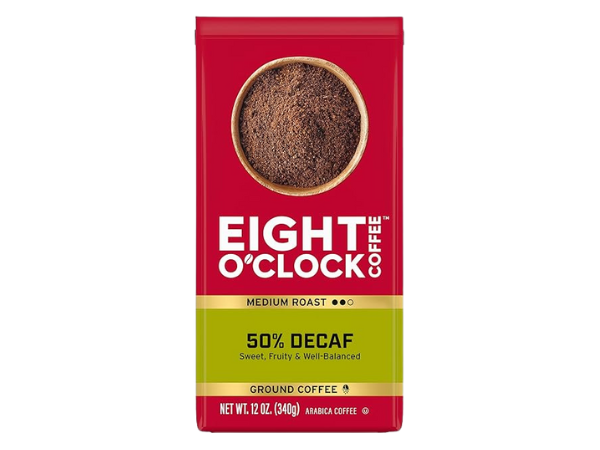
How Caffeine Levels Differ Across Coffee Types
Not all coffee contains the same amount of caffeine. Roast level, bean variety, and brewing method all play a role.
| Coffee Type | Average Caffeine (per 8 oz) | Notes |
|---|---|---|
| Light Roast | 95–120 mg | Higher caffeine by weight, brighter flavor |
| Medium Roast | 90–110 mg | Balanced flavor and caffeine |
| Dark Roast | 80–100 mg | Slightly less caffeine, bolder taste |
| Espresso (1 oz shot) | 60–75 mg | Concentrated, but smaller serving size |
| Low‑Caffeine Beans | 40–60 mg | Naturally lower caffeine content |
| Decaf Coffee | 2–5 mg | Almost caffeine‑free |
👉 Tip: If you want less caffeine but still crave flavor, choose naturally low‑caffeine beans or blends instead of relying only on roast level.
Decaf vs. Low‑Caffeine: What’s the Difference?
It’s easy to confuse decaf with low‑caffeine coffee, but they’re not the same.
- Decaf Coffee:
- Processed to remove 97–99% of caffeine.
- Usually leaves only 2–5 mg per cup.
- Flavor can sometimes be muted depending on the decaffeination method.
- Low‑Caffeine Coffee:
- Naturally contains less caffeine (about 40–60 mg per cup).
- No chemical processing required.
- Retains the full flavor of the bean.
Quick takeaway:
- Choose decaf if you want almost no caffeine.
- Choose low‑caffeine if you want less caffeine but full flavor.
Understanding the difference helps you pick the right option for your needs—whether you’re aiming to cut caffeine almost entirely or simply reduce it without losing taste.
Tips for Enjoying Coffee Without the Jitters
You don’t have to give up coffee to avoid caffeine overload. A few smart adjustments can help you enjoy your brew comfortably.
Practical tips:
- Switch to low‑caffeine beans for your second or third cup of the day.
- Try half‑caf blends (50% regular, 50% decaf) for balance.
- Brew smaller servings — a 6 oz cup instead of 12 oz makes a big difference.
- Stay hydrated — drink water alongside coffee to reduce side effects.
- Avoid late‑night cups — stick to mornings or early afternoons.
- Experiment with brewing methods — cold brew often feels smoother and less jittery.
👉 With the right beans and habits, you can keep coffee in your daily routine while minimizing the downsides of caffeine.

